Top Three Tips for Managing Email - Tip 3 - How to Triage Your Inbox
One of the biggest challenges we face each day is how to manage our email and the workload it delivers. For most of us, our workflow is centred around ongoing conversations that are fuelled by unstructured and unscheduled messages delivered through various digital communication tools, especially email.
Here are my top 3 tips for managing this aspect of your daily work:
Handle Each Email Only Once
Use the 4D Process
Triage Your Inbox
Tip 3 - The Triage Your Inbox process
The Triage process involves a quick look at each new unread email, working from top to bottom and making one of 4 possible decisions the first (and only) time you handle the email, like a Triage nurse in the emergency department of a hospital quickly assessing incoming patients.
Delete
Deal with it (if the next action will take 2 minutes or less)
Delegate to someone else
Decide on the
· Priority . . .
· Next action . . .
· Due date or When . . .
you will come back to this email to give it the time and attention it requires (later today, tomorrow, next week, next month, whenever).
My research shows that 33-34% of email can be handled within 2 minutes and 35-40% needs more time, energy and attention at another time. For these, you can customise the view of your inbox to capture the level of priority, type in the next action required, and the date this next action needs to occur.
Once the Triage step has been completed, you’ll see the remaining emails that need your further attention showing in order of priority (so that you do ‘first things first’), the next action to be taken (so you don’t have to re-read and re-analyse the email) and you’ll only see the emails that need your attention today (uncluttered by emails that don’t need your attention till tomorrow, next week, next month etc).
This process of identifying the priority, next action and due date for each email minimises the amount of mental energy needed to keep up with everything – it minimises double-handling and wasted effort. The end result of organising your inbox this way is a saving of enormous amounts of time, energy and effort, cutting through the overload and overwhelm like a hot knife through butter.
You see, it’s not actually the volume of emails you receive that causes overload – it’s reading the same email 3, 5, 8 or more times before taking action that is overwhelming. The proof of this can be seen in the feedback I’ve received from recent participants, who have learnt this new process in some of my recent ‘Revolutionise Your Inbox’ workshops.
““The impact this course has had on my mental health is truly amazing. I can leave work at work and not keep the mental load open. I greatly appreciate everything I have learnt. Thank you.””
““I decided to join the training program because I was struggling to manage my boss’s inbox, which had become overwhelming. I found it difficult to prioritise important emails and ensure nothing urgent was missed.
After attending several lunchtime sessions with Steuart, who is incredibly knowledgeable, I knew this training would be beneficial. My expectations were not just met; they were exceeded. The most valuable lesson I learned was how to set up and use the triage view for managing emails. This method has not only saved me time but also made the inbox appear much less daunting.
After completing the training, I feel empowered with new skills and tools that I can apply to my work. I am now more confident in managing the inbox and will work closely with my boss to streamline her email workflow, ultimately saving her time. Thank you for this transformative experience!” ”
““This has made a huge impact on my daily work, met expectations and more. Next step to work with my CEO and also recommend to HR for further training to staff.” ”
Now it’s important to note that this Triage process is not simply looking for the most urgent, most enjoyable or most interesting stuff to deal with first. David Allen calls this ‘emergency scanning’ and while that may be necessary at times (especially when you’re at a conference or ‘on the run’ between meetings), it is not the effective Triage processing method mentioned above.
To Triage effectively, you must use some mental rigour or discipline to process each email one at a time, starting at the top and working your way through each message. As Allen says;
““as soon as you break that rule and start processing only what you feel like or in some random order, you’ll invariably start to leave things undone and your sub-conscious mind will start to get involved in trying to keep track of things”.”
Once you get into the pattern of using this 4D process, it will take less and less mental effort and emotional will-power and it will become more of a habit. This is a good thing. A habit, as defined by James Clear in his excellent book called ‘Atomic Habits’, is “a routine or behaviour that is performed regularly – and in many cases automatically” (ie: with minimal mental rigour).
Next Step(s)
A: Triage Your Inbox TRAINING program
Join the upcoming ‘live’ Triage Your Inbox program starting in October. You’ll save at least 68 minutes per day and free up 15-20% of your headspace.
Tuesday 1 Oct 2024 - Kick off session (30 mins)
Tuesday 8 Oct 2024 - Masterclass (2 hours)
Tuesday 15 Oct 2024 - Review & Coaching workshop (60 mins)




